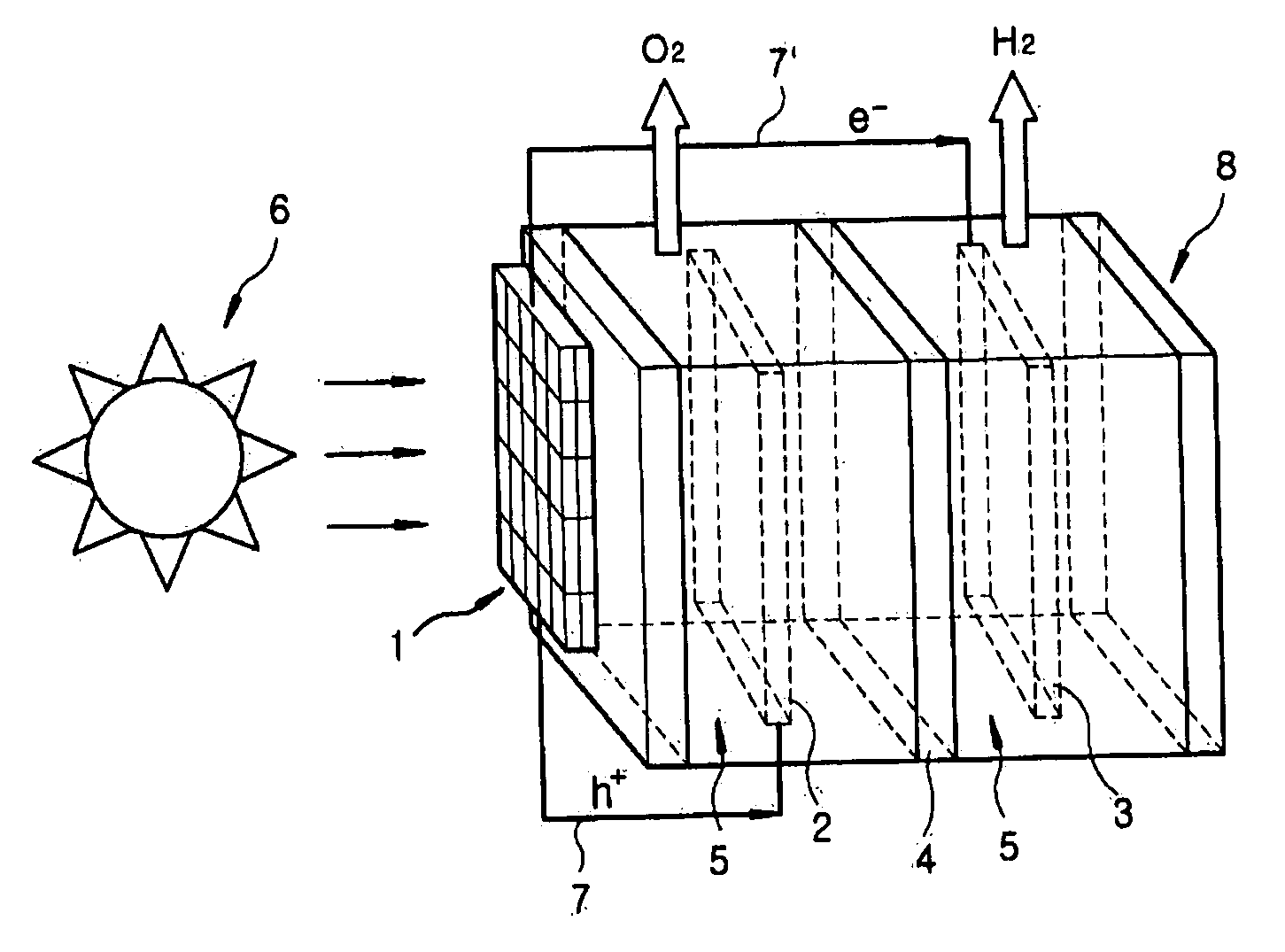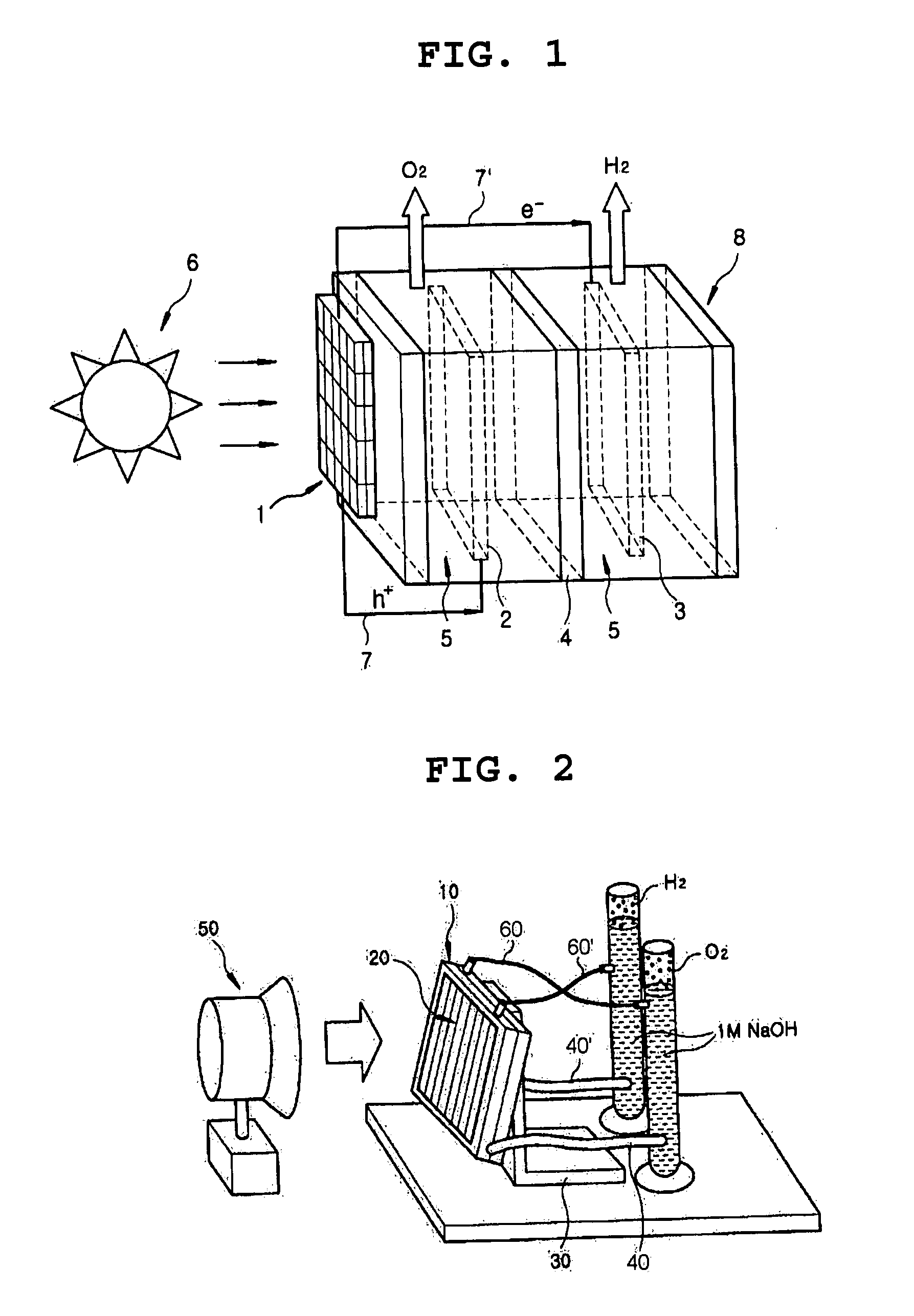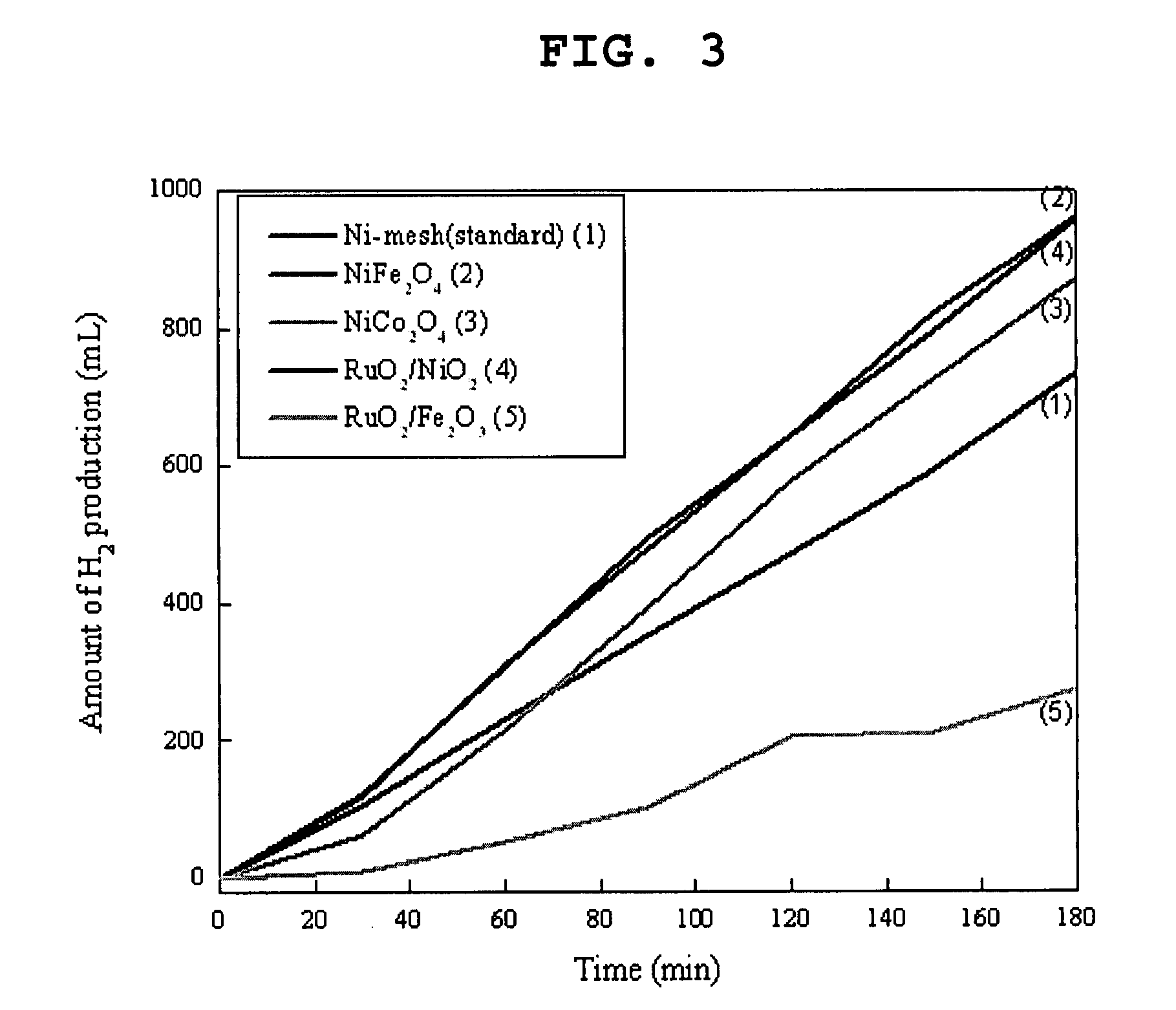Photoelectrochemical system for hydrogen production from water
a photoelectrochemical and water-based technology, applied in electrochemical generators, instruments, energy input, etc., can solve the problems of corrosiveness of optical electrodes, limitation of electrode material selection, poor corrosion resistance of silicon photoelectric cells widely used in the art,
- Summary
- Abstract
- Description
- Claims
- Application Information
AI Technical Summary
Benefits of technology
Problems solved by technology
Method used
Image
Examples
example 1
[0027]An example of the photoelectrochemical (PEC) system of the present invention shown in FIG. 2 was fabricated as described below:
[0028]Specifically, two acryl plates having the size of 12.5×12.5 cm2 were prepared. An Ni mesh which serves as an catalytic oxidation electrode, an ion exchange film capable of selectively passing OH ions, and a Pt mesh which serves as a catalytic reduction electrode (3) were placed between the two acryl plates, and the resultant was subjected to vacuum-tightening using screws to obtain a laminate (10).
[0029]To the outer surface of the laminate (10), silicon photoelectorde (20) having the size of 12.5×12.5 cm2 (Voc=2.59 V, Isc=1.582 amphere, Pmax=2.686 W) was attached using an adhesive means, and the resulting assembly was electrically connected to the two electrodes in the laminate (10) using electrical wires.
[0030]The silicon photoelectrode (20) / laminate (10) assembly was supported on a base using means (30), and 1 M NaOH aqueous electrolyte solutio...
example 2
[0032]The procedure of Example 1 was repeated except that NiFe2O4, NiCo2O4, RuO2 / NiO2, and RuO2 / Fe2O3 were used instead of the Ni mesh as the catalytic oxidation electrode.
[0033]The catalytic oxidation electrodes were previously prepared by spraying an aqueous solution of nickel nitrate, iron nitrate, cobalt nitrate, or ruthenium chloride on a heated substrate, and heat-treating the resulting spray-coated substrate at 650° C. for 2 hours under an air atmosphere in a furnace.
[0034]The amounts of hydrogen produced by the PEC systems obtained using the above electrodes were measured by the same method as in Example 1, and the results are shown in FIG. 3 together with that of Example 1.
[0035]As seen from Table 1 and FIG. 3, in accordance with the present invention, hydrogen can be efficiently generated at a high yield by way of using the inventive photoelectrochemical system.
[0036]While the invention has been shown and described with respect to the preferred embodiment, it will be under...
PUM
| Property | Measurement | Unit |
|---|---|---|
| size | aaaaa | aaaaa |
| conductive | aaaaa | aaaaa |
| optically active | aaaaa | aaaaa |
Abstract
Description
Claims
Application Information
 Login to View More
Login to View More - R&D
- Intellectual Property
- Life Sciences
- Materials
- Tech Scout
- Unparalleled Data Quality
- Higher Quality Content
- 60% Fewer Hallucinations
Browse by: Latest US Patents, China's latest patents, Technical Efficacy Thesaurus, Application Domain, Technology Topic, Popular Technical Reports.
© 2025 PatSnap. All rights reserved.Legal|Privacy policy|Modern Slavery Act Transparency Statement|Sitemap|About US| Contact US: help@patsnap.com



